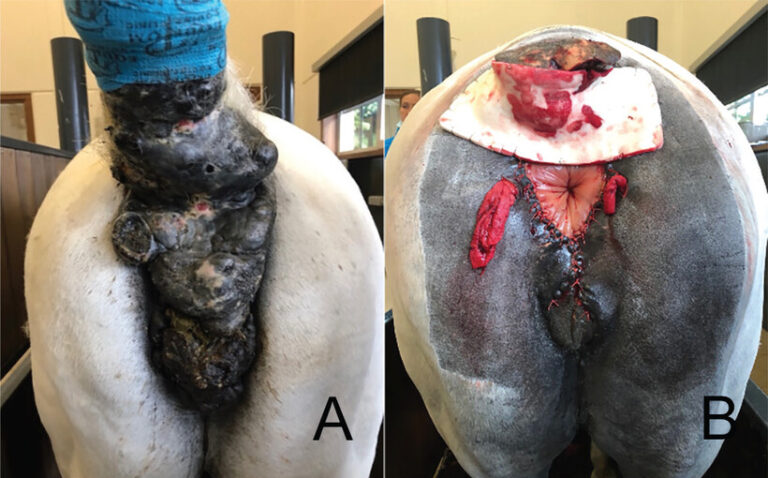
They don’t teach us business management in vet school,” is an oft-repeated lament among practitioners who attended the American Association of Equine Practitioners’ July Practice Management Focus session, sponsored by Merck, in Oklahoma City. While more veterinary schools are heeding the call to offer at least a few business classes, practical information from those who have been there and done that is invaluable.
The truth is, most, if not all, equine veterinarians can benefit from some business education. The July session included a variety of soft and hard topics—from hiring a practice manager and communicating with different generations to a mathematical formula aimed at helping you make the best equipment purchasing decisions. The following is a brief recap of the highlights of the session.
Why You Need a Practice Manager and How to Get a Great One
D. Kirk Eddleman, MHA; e-mail kirk@equinepracticemanagement.com
Finding the right practice managers, developing them professionally and giving them the authority and responsibility to develop the business aspects of the practice can be one of the best investments a practice owner will ever make. This article will give readers an understanding of what a practice manager can and should do for a practice, what to look for in a practice manager, and ways to help practice managers develop themselves professionally.
A good practice manager will handle all the details of running the practice except the medical diagnosis and treatment of patients. An NCVEI survey found that veterinary practices that relied on their staff members to handle the management duties were significantly more profitable than those that didn’t. How significant? According to the survey, the average clinic enjoyed an additional $119 of income for every hour staff members, rather than a veterinarian, worked on management issues. That extrapolates out to an additional $247,520 in gross revenue for a full-time practice manager.
Highly successful practices consistently hire competent people and then stay out of their way to let them manage. One word of caution: This does not mean abdicating your responsibilities. Delegation is the act of empowering the interest of others. Abdication is giving up responsibility to others with no intention of resuming it. Too often, veterinarians/owners prefer to abdicate financial and administrative responsibility to the practice manager and staff. As a rule of thumb, in any business, no employee should become so important that replacing him or her could derail the practice. As the owner, you still must provide vision, leadership and strategic planning to move the practice forward. When you understand your role as leader and let your team manage the day-to-day operations, your profits will grow and your headaches will shrink.
A Strategy for Effective Communication in Equine Practice
Betsy Charles, DVM; e-mail betsycharles@mac.com
In today’s equine practice, four generations (Traditionalists, Baby Boomers, Generation X-ers and Millenials), each with its own unique way of looking at the world, are trying to work together and collaborate to be productive and innovative in order to provide exceptional veterinary service to clients.
Common issues in managing this multigenerational workplace include villainizing the “other” generations or merely tolerating their presence. It is not unusual for conflict, disagreements and misunderstanding to get in the way of practicing quality medicine. Thus, it is important for equine practitioners to develop a strategy and skill sets that will allow for effective communication, not only within the practice, but also with clients, vendors and other valuable stakeholders, a strategy that builds bridges among the generations and engages all members of the team, regardless of their generation.
The Traditionalists were born prior to 1946 and were faced with myriad adversity during their formative years, including first-hand experience with the Great Depression and its aftermath, as well as World War II. They grew up in an environment where “right” and “wrong” were clearly defined by their parents and a strong work ethic was what led to prosperity. A woman’s place was in the home, raising the children, while it was the man’s responsibility to provide for the family financially and children were best seen and not heard. From a technology standpoint, Traditionalists came of age with the typewriter.
The Baby Boomers were born from 1946 to 1964 and came of age during the thriving new economy that followed World War II, which led this generation to be very secure and optimistic. They experienced the shift from the Golden Age of Radio to television as well as a move from the country into “suburbia.” As a result, they learned about values not only from their families, but also from television and their neighbors. With security came an outward focus that caused them to question the status quo, leading to the civil rights and women’s movements as well as anti-war sentiment specifically targeted at the Vietnam War. Due to their numbers, the workplace was very competitive for Baby Boomers. From a technology standpoint, Baby Boomers came of age with the mainframe computer.
Generation Xers were born from 1965 to 1980, and, unlike their Baby Boomer parents, came into a world of uncertainty and turmoil as civil rights and women’s liberation, political scandal, inflation and massive corporate layoffs led to an environment of distrust and fear. Because both dad and mom were at work, the resulting “latch-key kids” came home to empty houses after school and learned to be very independent and resourceful. After watching their parents get laid off and then divorced, they are skeptical of the way things have always been done and are more interested in working to live, rather than living to work, the first generation to emphasize work-life balance. From a technology standpoint, Generation X came of age with the personal computers.
The Millenials were born from 1981 to 1999. They came into the world at a time of unprecedented growth and prosperity and are struggling to understand how to function in a world that is now facing economic crisis. Raised by “helicopter parents” who hovered over their every move, this generation is very confident and has been told by their parents and teachers they can be whatever they want to be. They do not know life without the Internet and have experienced adversity through the lens of the media, thanks to 24-hour news coverage by CNN. They are an incredibly diverse generation, and they do not understand the need for “diversity training.” From a technology standpoint, Millenials came of age with smart phones and PDAs.
In his 1998 article, “What Makes a Leader?” Daniel Goleman outlined the five components of emotional intelligence: self-awareness, self-regulation, motivation, empathy, and social skill, and it is on several components of this framework that the strategy that follows is built.
To better understand one’s own generational bias, consider the following questions: Why do I have a problem with the older/younger generations? What is it that bothers me about my associate’s desire to have work-life balance? Can I explain the benefit of “paying your dues”? What threats do Traditionalist/Baby Boomer/Generation X/Millenial values represent? What role do I play in causing the tension between us? How will I need to change to take advantage of the generation opportunity instead of increasing the generation gap? Why do I get so frustrated when my boss doesn’t acknowledge my new ideas?
Step 1: Recognize Your Own Generational Bias (Self-Awareness)
Step 2: Suspend Your Generational Bias (Self-Regulation)
Step 3: Learn How to Speak Other Generational Languages (Empathy or Social Awareness)
Step 4: Build Relationships Across Generations (Social Skill)
Creating a successful, generationally diverse team requires mindful attention to which strategies build bridges between people and which strategies widen the generation gap. Incorporating emotional intelligence theory into a generational communication strategy can foster engagement among all team members and allow generational strengths and abilities to shine.
Purchasing Equipment: A Plan to Expand
Wilson C. Taliaferro, BSBA; e-mail wilson@kalmiaconsulting.com
There are many ways to invest in your practice. With proper planning and analysis, you can avoid costly mistakes while ensuring equipment purchases are worthwhile investments.
Before purchasing equipment, most practices try product demonstrations, but there are other things you can do to be sure of the product and the company selling the device.
Ask the company to provide you with the contact information for two or three existing clients with a practice that is a similar size and scope to your own. When you call these practices, it is good to talk generally about the product, but you can borrow some tools from the human resources industry to get more detailed information: “What are three things you like most about this equipment, and what are three things the company could improve to make it even better?” You’ll learn what is most important about that equipment to that organization, but you’ll also learn about any possibilities of buyer’s remorse.
Depending on the type of equipment and how it will be used in your practice, you should talk to different team members within an organization using the existing product. Practice management software is used differently by doctors than it is by office staff and their accountants. If you only ask another doctor’s opinion about the product, you’ll only get a fraction of the perspective.
Call the tech support number before you buy something. Be friendly, convey a sense of fun, and you may get some insight that would only be achieved after experiencing problems with the equipment. Do you get to talk to a person or do you have to wait for a return call? If this is a technical product, could your least technically savvy team member work with this group to resolve an issue in a timely manner?
If this equipment doesn’t work out, or your practice faces unforeseen disaster, how will you liquidate this investment? Leasing and financing means there are liens that need to be addressed before you can sell something or trade it in. Ask your financial institution what the process would be in the unlikely event that you need to trade in the equipment or upgrade to a different piece of equipment.
After at least one fiscal quarter into your investment, are your sales where they need to be to cover expenses? Do you need to change your pricing? Did you adequately estimate your time for the procedures? If you need to adjust things, don’t wait until small problems become big. If things are working well, then start planning for the next success.
Creating Preventive Health Plans for an Equine Veterinary Business
Duncan F. Peters, DVM, MS; e-mail dpeters@hagyard.com
Preventive health care plans can be an important part of a successful business plan for equine veterinary practices. They can be useful to provide a consistent income to the practice, can be incorporated during slower periods of seasonal work, can be utilized to assimilate new associates into the practice and can be helpful to allow veterinarians to regularly connect with clients. Health plans should be viewed as an increased level of service to our equine clients, as well as a value added service. A variety of different plans can be developed based on the profile of the horse use and the clientele within the practice.
Preventive Medicine Plan
A practice may want to stress the importance of a newer, scientific-based, strategic deworming program which requires monitoring of fecal egg counts to assess parasite load and the need for deworming. Fecal egg count evaluation requires both the client and practice associates to interact and evaluate the need for timely deworming.
Preventive Dental Plan
Exam and floating. More advanced dental procedures (extractions, fractures, fillings, etc.) can be incorporated into a preventive dental plan as determined by the desire, expertise, equipment, facilities and support personnel of the veterinarians involved.
Preventive Hoof Care
This program involves assessing the current state of the feet as it relates to static and dynamic properties of the feet. It can be as simple as maintaining a photographic history of the feet and shoeing that can be referred to and reviewed by the farrier, veterinarian and client on a regular basis. It may be more complex and involve photographic and video analysis of the horse standing or in motion.
Musculoskeletal Health Plan
The program is based on a systematic, thorough examination of the horse which includes assessment of conformation, digital palpation of axial and appendage musculoskeletal structures, movement evaluation and dynamic flexion tests. In addition, bloodwork to assess muscle function and general health may be useful to identify subclinical conditions or provide a baseline for future reference.
The incorporation of specific preventive health programs into an equine practice can help distribute veterinary workload through the year and contribute to the economic stability of the practice. These programs also allow the veterinarian to be more involved with aspects of managing the horse for the intended use. In this way, the veterinarian becomes the main information source for the owner or trainer because of his or her knowledge of the horse and proactive approach to care.
Reprinted with permission of the American Association of Equine Practitioners and the speakers.




